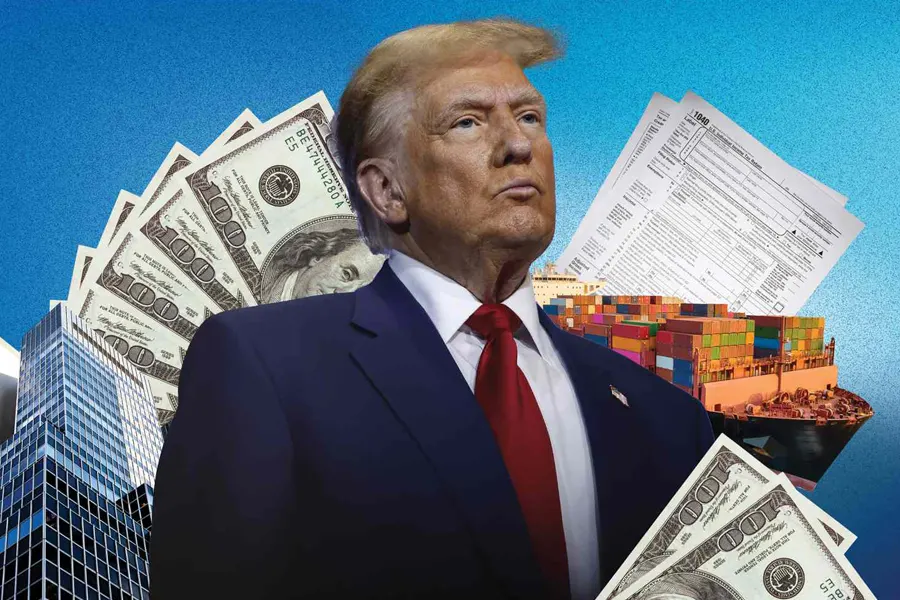
As the global economy navigates an era of uncertainty shaped by geopolitical tensions, technological advancements, and lingering pandemic aftershocks, Trump’s impact serves as a critical reference point for understanding current and future trends.
The Legacy of “America First” in Trade and Globalization
Trump’s “America First” doctrine introduced a new era of economic nationalism that reshaped global trade. His administration’s tariffs on China and other trading partners disrupted established supply chains, forcing companies to rethink their strategies.
By 2025, the aftershocks of these policies have manifested in several ways:
- Regional Trade Alliances: The decoupling of U.S.-China trade relations accelerated the rise of regional trade agreements, such as the Regional Comprehensive Economic Partnership (RCEP) in Asia. These agreements have grown in importance as nations diversify trade relationships.
- Shift in Global Supply Chains: Businesses have reduced their reliance on China, opting for “China Plus One” strategies that include nations like Vietnam, India, and Mexico. This realignment continues to influence investment flows and trade balances.
- Persistent Trade Tensions: Although U.S.-China relations improved slightly under subsequent administrations, the competitive dynamic between the two superpowers remains a defining feature of global finance. Trump’s policies laid the groundwork for ongoing trade conflicts that affect market stability.
Tax Reform and Corporate Investment in 2025
The Tax Cuts and Jobs Act of 2017 remains a cornerstone of Trump’s economic legacy. By significantly lowering corporate tax rates, the reform aimed to stimulate investment and economic growth in the United States.
In 2025, the global implications of this policy endure:
- Competitive Corporate Tax Landscape: Other nations have followed suit, reducing corporate taxes to attract investments. This trend has led to increased competition among countries to provide business-friendly environments.
- Fiscal Challenges: The rise in global debt levels, partly driven by tax cuts and pandemic-related spending, poses challenges for governments trying to balance growth with fiscal responsibility.
- Investment Patterns: The initial boost in domestic corporate investment in the U.S. continues to influence global financial markets, particularly in sectors like technology and clean energy, where U.S. companies lead.
Geopolitical Shifts and Financial Instability
Trump’s presidency was marked by significant geopolitical shifts, many of which continue to shape global finance in 2025. His withdrawal from multilateral agreements, sanctions on Iran, and rhetoric on NATO altered traditional alliances and created a more fragmented global order.
These shifts have had lasting financial consequences:
- Energy Markets: Trump’s withdrawal from the Iran nuclear deal disrupted global oil markets, with long-term implications for energy security. By 2025, the transition to renewable energy is in full swing, but oil remains a critical driver of financial stability, especially in emerging markets.
- Dollar Dominance Under Pressure: While the U.S. dollar remains the world’s reserve currency, efforts by countries like China and Russia to reduce reliance on the dollar have gained momentum. Initiatives such as central bank digital currencies (CBDCs) and alternative payment systems have been partly motivated by Trump-era sanctions and financial pressures.
Deregulation and Financial Market Dynamics
Trump’s deregulation of financial markets during his presidency encouraged risk-taking and boosted short-term growth. However, by 2025, questions about the long-term stability of financial systems remain.
Key impacts include:
- Increased Market Volatility: The rollback of Dodd-Frank Act provisions allowed for greater financial innovation but also heightened risks. Market participants are now more cautious, with regulatory frameworks under review to prevent future crises.
- Private Equity and Venture Capital Growth: Deregulation spurred the growth of private equity and venture capital, leading to significant investments in technology, healthcare, and renewable energy sectors. This trend continues to reshape global financial flows.
Global Finance and Climate Change
One area where Trump’s policies diverged from global trends was climate finance. His withdrawal from the Paris Agreement and skepticism toward renewable energy delayed U.S. participation in global climate initiatives. However, by 2025, climate finance has become a critical aspect of global markets.
The long-term effects of Trump’s stance include:
- Accelerated Transition Under Successors: Subsequent administrations had to play catch-up in mobilizing investments for renewable energy and climate resilience. The lag created by Trump’s policies placed the U.S. behind Europe and Asia in green finance leadership.
- Private Sector Leadership: Despite federal setbacks during Trump’s term, private companies and states like California continued to invest heavily in sustainability. By 2025, this dual approach has positioned the U.S. as a significant but not dominant player in climate finance.
Influence on Emerging Markets
Trump’s policies had mixed effects on emerging markets, many of which are still grappling with their legacies in 2025. The strong U.S. dollar and rising interest rates during his presidency created significant challenges for these economies.
By 2025:
- Debt Vulnerabilities: Many emerging markets remain burdened by dollar-denominated debt, exacerbated by Trump-era policies and subsequent global economic challenges.
- Shift Toward Regional Cooperation: Emerging markets are increasingly focusing on regional trade and investment partnerships to reduce reliance on the U.S. and Europe, diversifying their financial risk.
The Post-Pandemic Economy
Trump’s handling of the COVID-19 pandemic, including the CARES Act, had a profound impact on global finance. The unprecedented stimulus measures introduced during his term set the stage for recovery but also created long-term inflationary pressures.
By 2025:
- Inflation Management: Central banks worldwide continue to grapple with inflation, partly fueled by the massive liquidity injections during the pandemic. Trump’s emphasis on short-term economic gains has left a mixed legacy in this regard.
- Digital Transformation: The pandemic accelerated digital adoption in financial markets, with technologies like blockchain and CBDCs gaining traction. These advancements were indirectly shaped by the financial policies and disruptions of Trump’s presidency.
Future Implications
Looking ahead, Trump’s impact on global finance is likely to remain a reference point for policymakers and investors:
- Geopolitical Risks: The fragmentation of global alliances initiated during Trump’s term has heightened geopolitical risks, influencing investor sentiment and financial flows.
- Economic Nationalism: The resurgence of protectionism and economic nationalism continues to shape trade policies, impacting global supply chains and investment strategies.
- Financial Innovation: The deregulation and tax reforms under Trump have left a lasting mark on financial innovation, encouraging growth while raising questions about systemic stability.
Conclusion
President Trump’s presidency reshaped the global financial landscape in ways that continue to resonate in 2025 and will likely influence the future. From trade wars and tax reforms to deregulation and geopolitical shifts, his policies catalyzed profound changes in international finance. While some of his initiatives spurred growth and innovation, others introduced long-term risks and uncertainties. As the world navigates these challenges, Trump’s legacy serves as both a lesson and a benchmark for the evolving dynamics of global finance.
Be Part of the Next Mega Event: Global FinEXPO Dubai | 27-28 Nov 2025
The ultimate gathering for banking, finance, investment, and fintech industry leaders. Don’t miss this opportunity to network, learn, and grow!
January 27, 2025 10:28 am
Categorised in: Uncategorized, Featured
This post was written by Global FinEXPO Dubai





Comments are closed here.